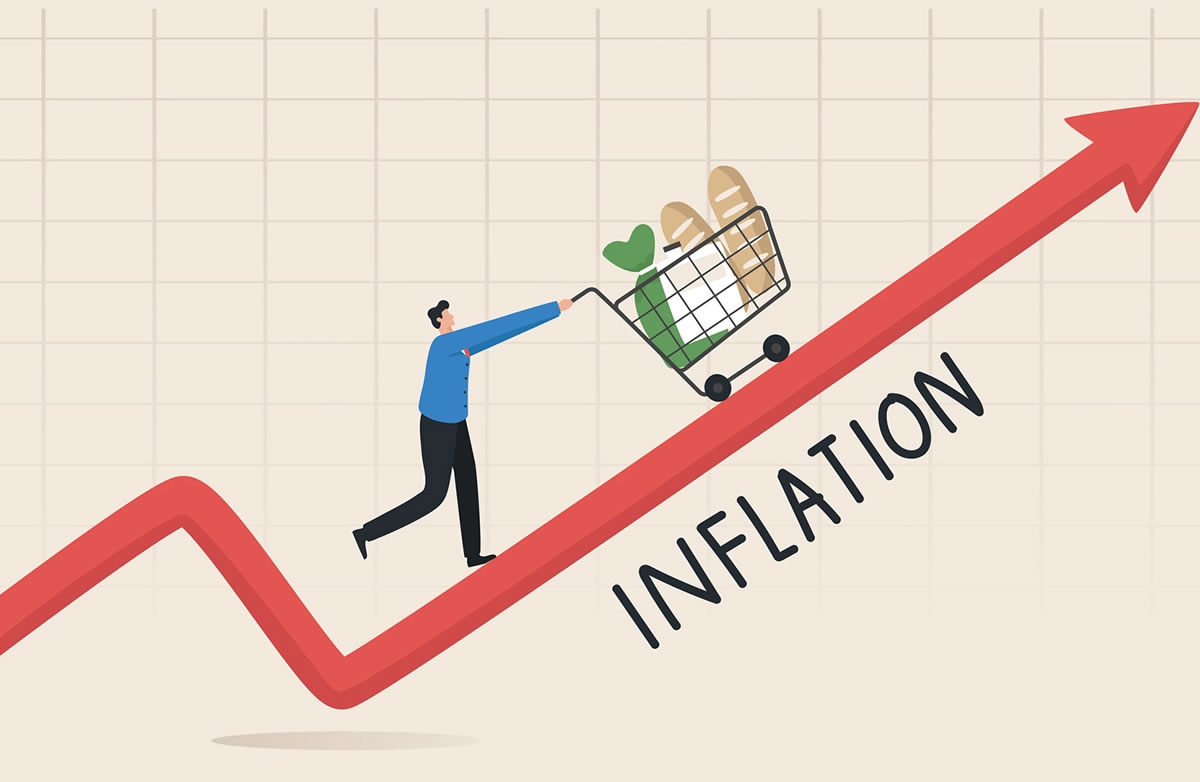
Growth, inflation, and adapting to unpredictable times
From boardrooms to grocery stores, inflation is affecting everyone. Prices are up over 7 percent and more around the world and with no signs of coming down anytime soon. Businesses are already reeling, and tired, from two years of a global pandemic that required nimble, innovative solutions.
It’s time again to strategize.
What are consumers and business leaders facing right now?
In short, a new reality. According to our latest research on consumer sentiment, consumer confidence dipped in October 2022. Only 38 percent of our survey respondents said they feel optimistic, down from 44 percent in October 2021. And the steepest drop was among high income consumers, a group that had been buying more expensive products and brands in 2020 and 2021.
Business leaders will need to figure out what consumers today find most compelling when it comes to value. To do this well, the big picture for them is visibility and insight into operations, data to inform decisions, quick thinking, and strengthening business relationships.
Is raising prices the only option for companies? What else should they consider?
They need to address their own leaky buckets. Most companies don’t measure the cost of inefficient operations that eat away at profits. A client who orders three times a week rather than one big order requires more shipping costs, and three people to answer phone calls and conduct follow up. Ordering specialty items and processing returns, all of these cost money but are rarely measured or accounted for.
So even though an account or a customer could look very positive from a profitability perspective, once you add in all the elements of cost to serve, it might come as a shock how many are not profitable. This visibility end to end allows for addressing issues that erode profit margins rather than raising prices.
How can companies approach auditing these ‘leaky buckets’ and finding solutions?
By collecting and understanding data. I’ve seen multiple situations recently where companies are not tracking data at the rep level, account level, or VP level. They’re not reporting data weekly to hold people accountable. They’re not doing that drum beat of reviews week over week, not doing the necessary analytics to understand which accounts are rejecting a price increase, which items are still struggling, and where the company is out of sync with the market. All of that tracking and heavy analytics is often not there. By missing these things, opportunity is left on the table.
When price increases must happen, is a flat approach best or is there an art or science to it?
It’s very important to play around with the knobs of the price increase to go more aggressive on some products and less on others, because customers have power here as well. They can choose to find another vendor, do without certain items, or substitute with generic or cheaper products. There’s the science of understanding what the market will support, but also the art of knowing your customers and who’s going to be pushing back and leaving you.
So, it’s not just about keeping good margins now, it’s about keeping customers for the long term?
Definitely. The last thing companies want is to be perceived as price gouging under cover of inflation. Customers are expecting some price increases, but it does not mean that they’re happy about it. It might go alright now because of known supply chain constraints, but when the situation turns around, companies that have not been surgical around price increases, knowing exactly where to push up prices and where not to push, will pay a price with consumers and clients.
There are ways companies can support customers now for long term retention, even amid price increases. In distribution, companies can partner with customers and identify products in their supply chain that can be swapped out for lower cost substitutes to help them save money. When there is a price increase, communicating about the rationale behind it is key, but it must happen in the context of overall service and strategies to keep providing the best business. The moment the conversation is purely on price is when half the battle is lost.
How does inflation affect growth and overall business profitability?
What’s important to keep in mind is the difference between gross profit and gross margin. By raising prices revenue increases, and it looks like the company is growing. But if companies do this without maintaining or expanding their gross margin (which is profit pound as a percent of revenue) then they are effectively less profitable despite topline growth. Well, that equation destroys shareholder value. The equation that creates the most shareholder value is profitable growth, which is the ability to grow revenue at the same rate as profit. That’s the challenge with inflation: passing cost increases, while maintaining margins and without losing customers. That makes the surgical approach to price increases so important.
In this volatile market, how important is it to stay nimble?
Decisions in this time have to be accelerated tenfold. With such rare inflation, there’s no business as usual. Every change made has to be monitored and evaluated closely and adjusted quickly if needed. It’s like a military control room watching as the situation unfolds and making fast decisions. Think of that level of visibility into operations and that speed of assessment and reaction.
What should companies keep in mind in these unpredictable times?
What goes up must come down. At some point, we’ll be in a deflationary world. Customers will expect prices to come down, and companies that have been disciplined around capturing cost increases they’ve incurred and passed on to customers will be in a better position to reduce prices when deflation happens.
Inflation is just a difficult reality now, but the best in class companies are using this as an opportunity to build long lasting partnership with their customers. They not only maintain profit margin, they work to win market share by partnering with customers, showing them that they care, that they’re willing to go the extra mile on services so that once this craziness ends, they’re ahead on margin but also on strengthening a relationship with customers.
Author: Safwan Ul Amin (Business Sales Director)
I have over 20 years experience in various business industries. Contact me on 02037332315 or [email protected] if you are thinking about buying or selling a business via our platform.
Sorry, the comment form is closed at this time.



